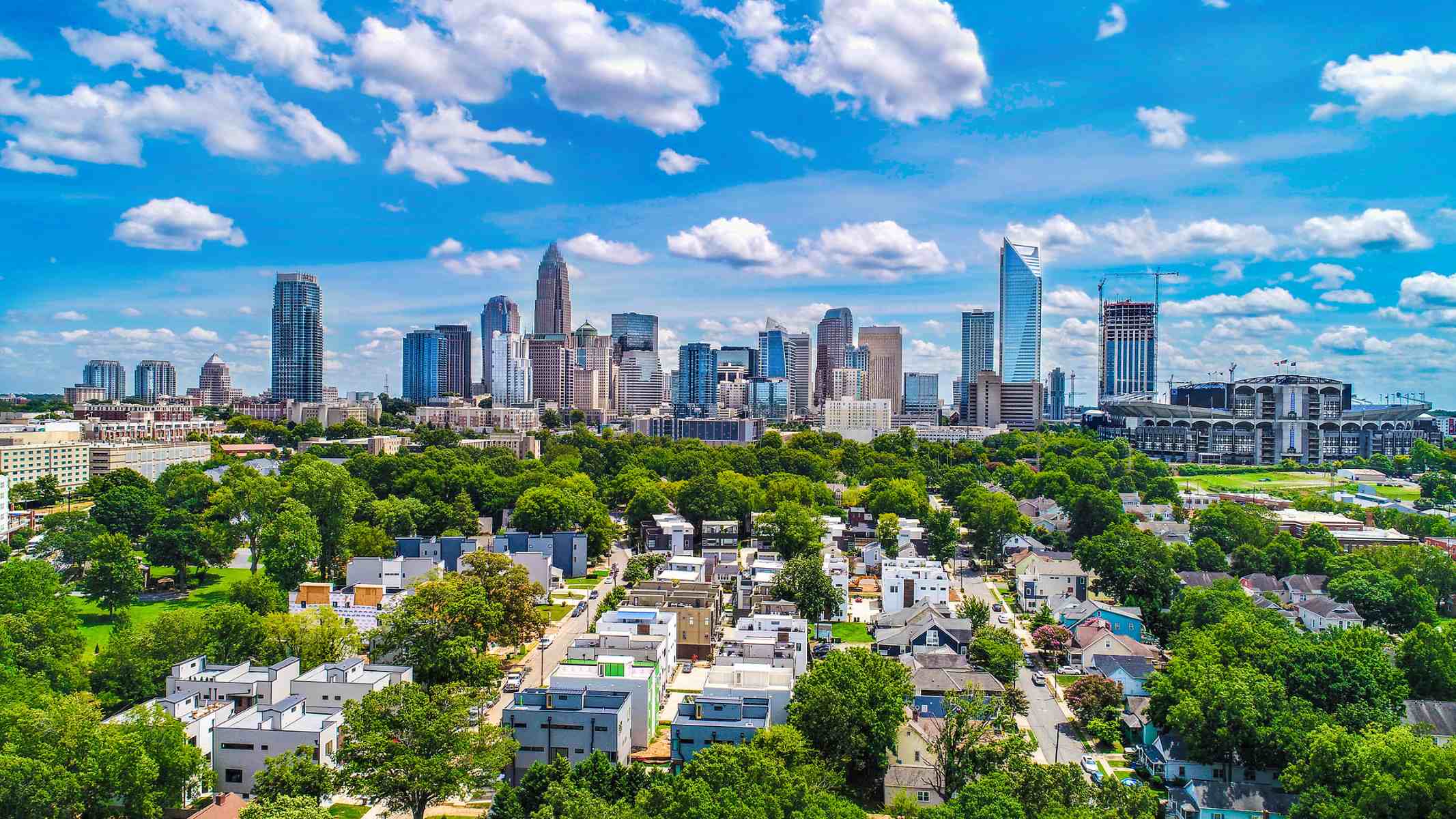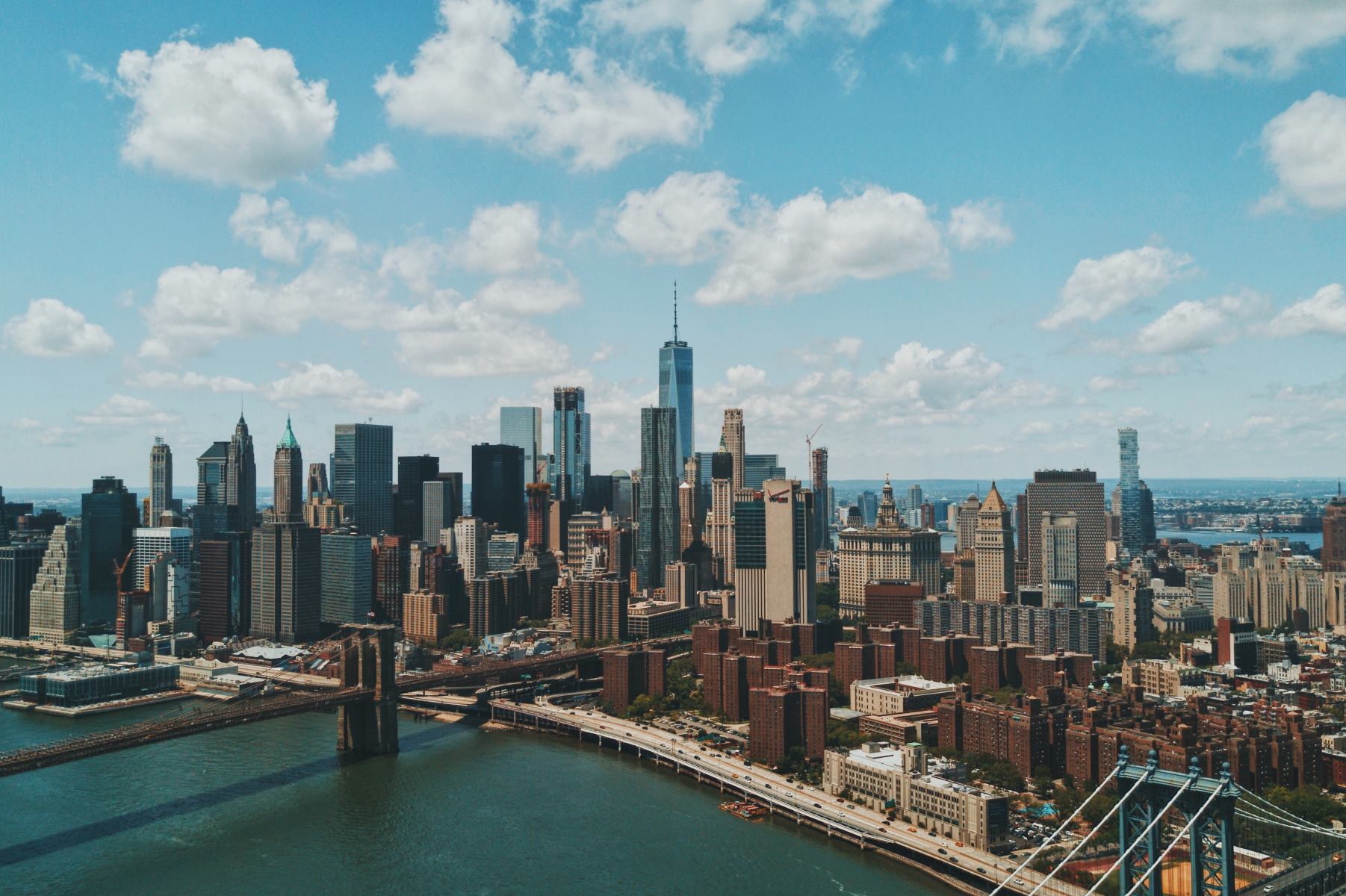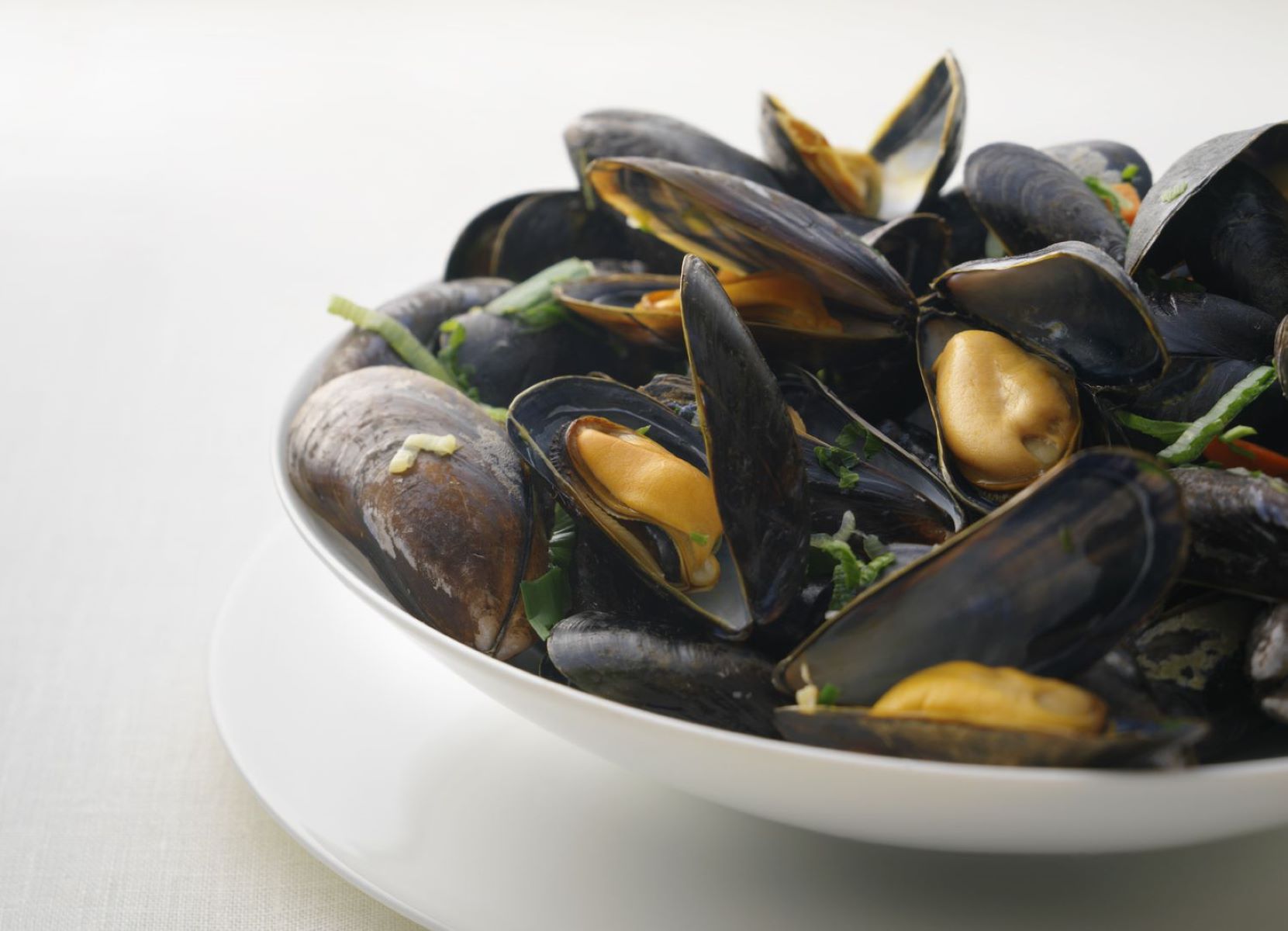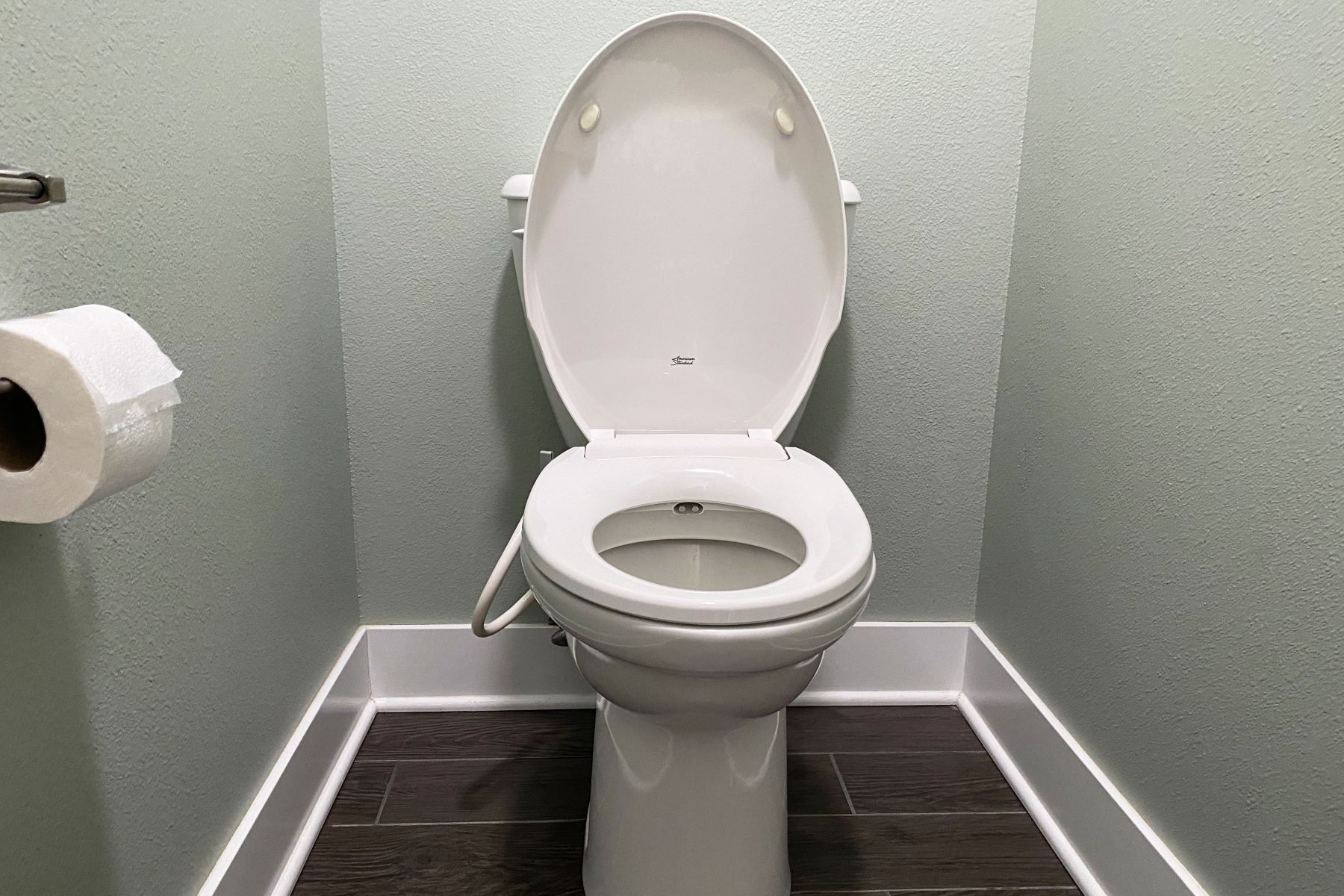Home>Lifestyle>Miami Vs. New York: The Ultimate Showdown Of City Living
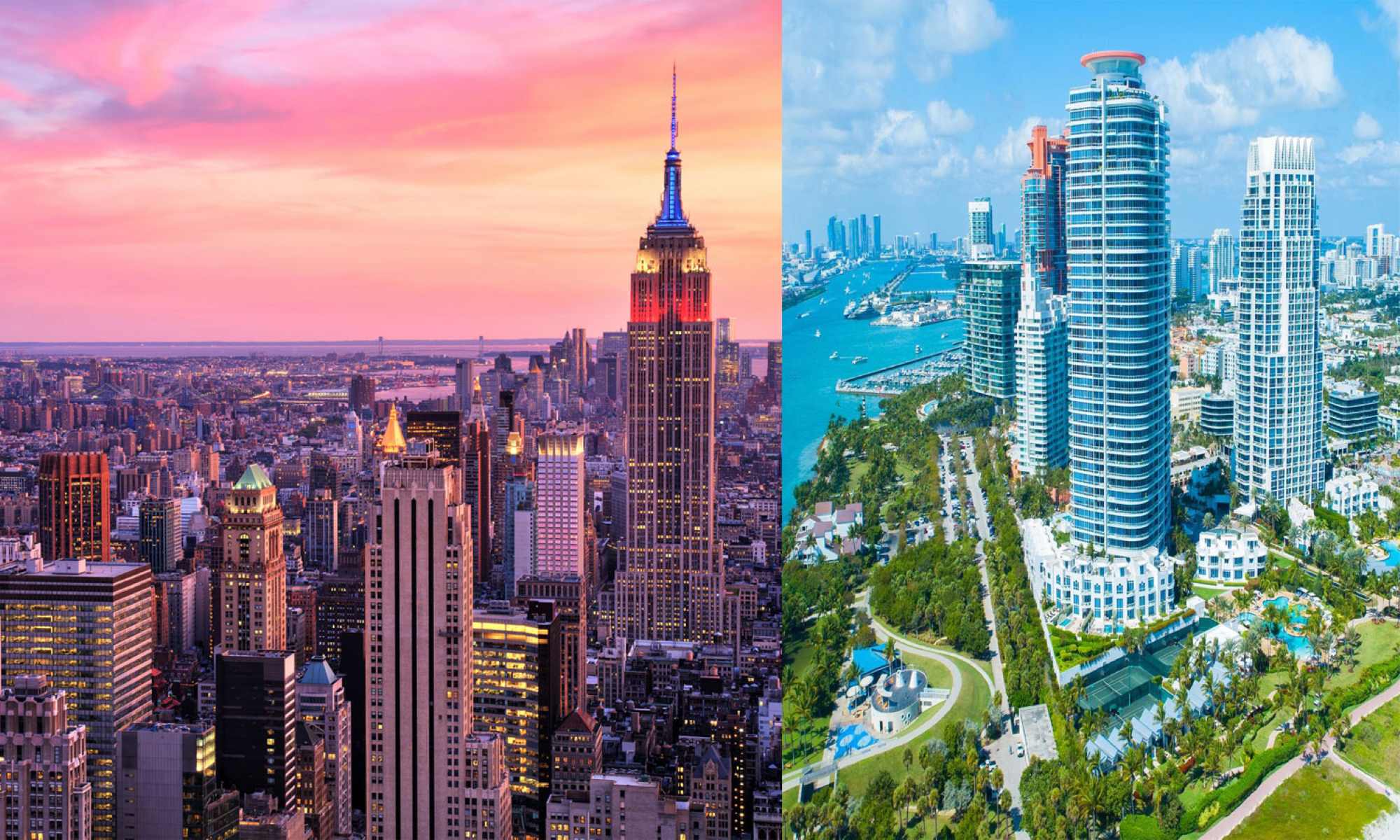

Lifestyle
Miami Vs. New York: The Ultimate Showdown Of City Living
Published: February 14, 2024
Experience the vibrant lifestyle of Miami and the fast-paced energy of New York in this ultimate city living showdown. Discover the best of both worlds and find your perfect urban lifestyle.
(Many of the links in this article redirect to a specific reviewed product. Your purchase of these products through affiliate links helps to generate commission for Regretless.com, at no extra cost. Learn more)
Table of Contents
Introduction
When it comes to city living, Miami and New York stand out as two iconic metropolises, each offering a unique blend of culture, lifestyle, and opportunities. These cities are magnets for individuals seeking diverse experiences, bustling urban environments, and vibrant communities. However, the decision to settle in either Miami or New York is not one to be taken lightly, as each city presents distinct advantages and considerations. In this comprehensive comparison, we will delve into the key aspects of city living in Miami and New York, shedding light on the factors that shape the lifestyle in these two dynamic urban centers.
Miami, known for its sun-kissed beaches, vibrant art scene, and thriving Latin American influence, exudes a laid-back yet cosmopolitan vibe that draws in residents and visitors alike. On the other hand, New York, the epitome of the concrete jungle, pulsates with an unmatched energy, offering a melting pot of cultures, world-renowned landmarks, and a fast-paced lifestyle. As we embark on this exploration, we will uncover the contrasts and similarities between these two cities, providing valuable insights for those considering a move or simply seeking to satisfy their curiosity about the lifestyle disparities between Miami and New York. Let's dive into the heart of these cities and uncover what makes each of them a compelling choice for urban dwellers.
Cost of Living
The cost of living is a pivotal factor that significantly influences one's decision when contemplating a move to a new city. In this regard, Miami and New York present distinctive economic landscapes that can sway the lifestyle choices of prospective residents.
Miami
Miami boasts a relatively lower cost of living compared to New York, making it an attractive option for individuals seeking a more affordable urban experience. Housing expenses in Miami, although on the rise, are generally more reasonable than those in New York. Rental prices for apartments and homes in Miami can vary depending on the neighborhood, with areas such as Coral Gables and Coconut Grove commanding higher rents due to their upscale appeal, while more affordable options can be found in neighborhoods like Little Havana and Kendall.
In addition to housing, other aspects of daily life in Miami, such as groceries, dining, and entertainment, are often more budget-friendly compared to New York. The city's diverse culinary scene offers a range of dining options, from casual eateries to upscale restaurants, catering to various budget preferences. Furthermore, transportation costs in Miami, including gas prices and public transit fares, are generally lower than those in New York, contributing to a more manageable overall cost of living.
New York
Conversely, New York's reputation for being one of the most expensive cities in the world precedes it. The soaring housing costs in neighborhoods like Manhattan, Brooklyn, and certain parts of Queens can pose a significant financial challenge for many residents. Rent for apartments in desirable areas of New York City often commands a premium, and the overall cost of living, including groceries, dining, and entertainment, tends to be higher compared to Miami.
However, it's important to note that New York's higher cost of living is often offset by the myriad of opportunities it offers, particularly in terms of career advancement and cultural experiences. The city's unparalleled diversity, thriving job market, and access to world-class amenities contribute to its allure, despite the financial trade-offs.
In summary, while Miami presents a more affordable cost of living, New York's higher expenses are counterbalanced by its unparalleled opportunities and cultural richness. Ultimately, the decision between these two cities hinges on individual priorities and financial considerations.
Weather and Climate
The weather and climate of a city play a pivotal role in shaping the daily lives and overall experiences of its residents. Miami and New York, situated in distinct geographical regions, offer starkly different climates, each with its own set of advantages and considerations.
Miami
Miami, renowned for its tropical climate, beckons with year-round warmth and abundant sunshine. The city's proximity to the equator ensures consistently high temperatures, with mild winters and hot, humid summers characterizing its climate. The average annual temperature in Miami hovers around 77°F (25°C), creating an inviting environment for outdoor activities and beach-centric leisure.
The balmy climate of Miami fosters a laid-back and relaxed ambiance, attracting individuals who thrive in warm weather and enjoy an active outdoor lifestyle. The city's proximity to the Atlantic Ocean infuses its climate with a refreshing ocean breeze, offering respite from the heat and enhancing the overall comfort of its residents.
However, Miami's tropical climate also brings the risk of occasional hurricanes and heavy rainfall, particularly during the Atlantic hurricane season, which spans from June to November. While the city is well-prepared for such weather events, residents must remain vigilant and prepared for potential disruptions during these periods.
New York
In stark contrast, New York experiences a temperate climate characterized by distinct seasons. Winters in New York can be cold and snowy, with temperatures often dropping below freezing, while summers are warm and humid, creating a diverse range of weather conditions throughout the year.
The city's seasonal transitions offer a dynamic backdrop for residents, with the beauty of snowy winters giving way to the vibrant colors of spring and the balmy warmth of summer. Autumn in New York is especially renowned for its breathtaking foliage, attracting visitors from around the world to witness nature's spectacular display of colors.
The diverse weather patterns in New York contribute to a rich tapestry of seasonal activities and cultural events, from ice skating in Central Park during winter to outdoor concerts and festivals in the summer months. However, the city's winters, characterized by occasional snowstorms and icy conditions, necessitate a degree of resilience and preparedness among its residents.
In summary, Miami's tropical climate offers year-round warmth and sunshine, ideal for those who cherish a perpetually summery ambiance, while New York's temperate climate showcases the beauty of distinct seasons, providing a varied and visually captivating backdrop for urban living. The choice between these two cities, in terms of weather and climate, ultimately hinges on individual preferences for climate and seasonal experiences.
Transportation
Efficient and accessible transportation infrastructure is a cornerstone of urban living, significantly influencing the daily routines and mobility of city dwellers. In the context of Miami and New York, the transportation systems of these cities offer distinct experiences and considerations for residents and visitors.
Miami
Miami's transportation landscape is characterized by a blend of private vehicles, public transit, and alternative modes of mobility. While the city is renowned for its car-centric culture and sprawling layout, efforts to enhance public transportation options have gained momentum in recent years. The Miami-Dade Transit system encompasses Metrorail, Metromover, and Metrobus services, providing essential connectivity across the city and its surrounding areas. Metrorail, an elevated rapid transit system, offers a convenient mode of transportation for commuters, connecting key destinations such as downtown Miami, Coral Gables, and Miami International Airport. Complementing Metrorail, the free-to-ride Metromover provides an automated people mover system, facilitating seamless travel within the urban core. Additionally, the Metrobus network serves as a vital link for neighborhoods and communities beyond the reach of the rail systems, offering a comprehensive network of bus routes.
In recent years, Miami has witnessed the emergence of innovative transportation solutions, including ridesharing services, bike-sharing programs, and electric scooters, catering to the diverse mobility needs of its residents. The city's ongoing efforts to improve pedestrian infrastructure and promote sustainable modes of transportation align with its vision for a more connected and accessible urban environment.
New York
New York's transportation landscape stands as a testament to the city's bustling energy and unparalleled connectivity. The iconic New York City Subway, one of the world's largest and oldest rapid transit systems, serves as the backbone of the city's transportation network, facilitating millions of daily commutes across its extensive network of subway lines. The subway system, renowned for its 24/7 operation and extensive coverage, offers unparalleled access to neighborhoods throughout the five boroughs, making it a vital lifeline for New Yorkers.
Complementing the subway, New York's iconic yellow taxis and ridesharing services contribute to the city's dynamic transportation ecosystem, offering convenient travel options for residents and visitors alike. Furthermore, the city's extensive bus network, including express and local bus services, provides essential connectivity, particularly in areas with limited subway access.
New York's commitment to sustainable transportation is underscored by the widespread adoption of cycling as a mode of transit, with an extensive network of bike lanes and the popular Citi Bike program enabling residents to navigate the city on two wheels.
In summary, while Miami's transportation landscape reflects its evolving focus on public transit and alternative mobility solutions, New York's robust and multifaceted transportation network embodies the city's unparalleled connectivity and diverse transit options, catering to the distinctive needs and preferences of urban commuters. Whether navigating the sun-drenched streets of Miami or the bustling avenues of New York, the transportation systems of these cities play a pivotal role in shaping the urban experience for residents and visitors alike.
Entertainment and Nightlife
Entertainment and nightlife are integral components of urban living, offering residents and visitors a vibrant tapestry of cultural experiences, social gatherings, and after-hours escapades. In the contrasting realms of Miami and New York, the entertainment and nightlife scenes reflect the diverse personalities and atmospheres of these two iconic cities.
Miami
Miami's entertainment and nightlife scene pulsates with an electrifying blend of Latin flair, cosmopolitan elegance, and beachfront allure. The city's renowned nightlife hotspots, particularly in South Beach, beckon revelers with a kaleidoscope of options, ranging from chic rooftop bars and stylish lounges to high-energy nightclubs where the pulsating rhythms of salsa, reggaeton, and electronic beats reverberate into the early hours.
Beyond the pulsating beats of the nightlife scene, Miami's cultural landscape offers a rich tapestry of entertainment options, from world-class performing arts venues and art galleries to outdoor festivals and waterfront concerts. The Adrienne Arsht Center for the Performing Arts stands as a beacon of artistic excellence, hosting captivating theater productions, ballet performances, and symphony concerts that captivate audiences with their sheer artistry and creativity.
Moreover, Miami's diverse neighborhoods, such as Wynwood and Little Havana, serve as vibrant hubs of artistic expression, boasting colorful street art, live music venues, and eclectic culinary experiences that infuse the city with an unmistakable creative energy.
New York
In stark contrast, New York's entertainment and nightlife landscape embodies the city's larger-than-life spirit, offering an unparalleled array of cultural institutions, Broadway extravaganzas, underground speakeasies, and iconic landmarks that define the city's after-dark allure.
The neon-lit marquees of Broadway beckon theater enthusiasts and aficionados from around the world, showcasing a dazzling array of musicals, plays, and performances that epitomize the pinnacle of live entertainment. The city's diverse neighborhoods, from the historic charm of Greenwich Village to the trendy enclaves of Williamsburg, offer an eclectic mix of nightlife venues, including jazz clubs, rooftop bars, and hidden gems that cater to every conceivable taste and preference.
Moreover, New York's cultural calendar brims with a multitude of events, including film festivals, art exhibitions, and live music performances that reflect the city's ceaseless creative energy and artistic dynamism.
In summary, while Miami's nightlife exudes a sun-kissed blend of Latin rhythms and beachside allure, New York's entertainment scene embodies the grandeur of Broadway, the pulsating energy of its diverse neighborhoods, and the timeless allure of its iconic landmarks. Whether savoring the sultry rhythms of Miami's salsa clubs or immersing oneself in the theatrical splendor of New York's Broadway productions, both cities offer an abundance of entertainment and nightlife experiences that cater to the diverse tastes and preferences of urban revelers.
Food and Dining
Food and dining experiences are integral facets of city living, offering a tantalizing journey through diverse culinary landscapes and gastronomic delights. In the vibrant realms of Miami and New York, the food scenes reflect the cultural tapestries and distinctive flavors that define these iconic urban hubs.
Miami
Miami's culinary landscape is a melting pot of flavors, drawing inspiration from its rich Latin American influences, vibrant fusion cuisine, and coastal abundance. The city's renowned dining scene encompasses a spectrum of culinary experiences, from upscale waterfront eateries overlooking Biscayne Bay to unassuming family-owned restaurants tucked away in the city's diverse neighborhoods.
Embracing its Latin American heritage, Miami boasts an array of authentic Cuban, Peruvian, and Colombian eateries, where savory aromas and bold flavors transport diners to the heart of these vibrant cultures. The city's proximity to the ocean infuses its dining scene with a bounty of fresh seafood, inspiring seafood shacks, and upscale establishments alike to showcase the coastal treasures through innovative and delectable creations.
Moreover, Miami's culinary landscape extends beyond traditional fare, embracing a fusion of global influences and avant-garde culinary trends. The city's dynamic food halls, such as the bustling La Placita in the historic MiMo District, offer a mosaic of flavors, from artisanal tacos and gourmet burgers to artisanal cocktails, reflecting Miami's penchant for culinary innovation and experiential dining.
New York
In contrast, New York's food and dining scene epitomize the city's status as a global culinary capital, boasting an unparalleled array of dining establishments, from Michelin-starred fine dining destinations to humble yet iconic street food vendors. The city's diverse neighborhoods serve as epicenters of culinary exploration, each offering a captivating array of flavors and culinary traditions.
New York's cultural mosaic is vividly reflected in its dining landscape, with neighborhoods like Little Italy, Chinatown, and Harlem serving as bastions of authentic ethnic cuisine, inviting diners to embark on a gastronomic journey around the world without leaving the city limits. The city's iconic delis, pizzerias, and bagel shops have become emblematic of New York's culinary identity, showcasing the timeless allure of classic comfort foods and beloved culinary traditions.
Furthermore, New York's dynamic dining scene encompasses a tapestry of innovative culinary trends, farm-to-table concepts, and boundary-pushing gastronomic experiences. The city's vibrant food markets, such as Chelsea Market and Smorgasburg, offer a sensory feast of artisanal creations, gourmet delights, and diverse cultural expressions, underscoring New York's unwavering commitment to culinary creativity and epicurean excellence.
In summary, Miami's culinary landscape celebrates its Latin American influences, coastal abundance, and culinary innovation, while New York's dining scene embodies a global culinary tapestry, timeless culinary traditions, and avant-garde gastronomic experiences. Whether savoring the bold flavors of Miami's ceviche or indulging in the iconic flavors of New York's pizza, both cities offer a sumptuous and diverse array of food and dining experiences that cater to the discerning palates and culinary curiosities of urban epicureans.
Job Opportunities
Job opportunities are a pivotal consideration for individuals contemplating a move to a new city, as they directly impact career prospects, professional growth, and overall financial stability. In the dynamic landscapes of Miami and New York, the job markets present distinctive characteristics and opportunities, each reflecting the unique economic dynamics and industry landscapes of these iconic urban centers.
Miami, often heralded as a burgeoning hub for entrepreneurship and innovation, has witnessed a notable diversification of its job market in recent years. The city's strategic positioning as a gateway to the Americas, coupled with its burgeoning technology sector and thriving startup ecosystem, has fueled a surge in opportunities across various industries. The finance and trade sectors, bolstered by Miami's status as an international financial center, offer a wealth of opportunities for finance professionals, trade specialists, and international business experts. Moreover, Miami's prominence as a global tourism and hospitality destination has created a robust hospitality industry, providing a multitude of roles in hotels, resorts, and culinary establishments. The city's creative and cultural sectors, including the burgeoning arts and entertainment scene, also contribute to a vibrant job market, with opportunities for artists, performers, and creative professionals.
On the other hand, New York's job market stands as a beacon of diversity and dynamism, reflecting the city's status as a global economic powerhouse. The financial services sector, anchored by Wall Street and a myriad of financial institutions, offers a wealth of opportunities for finance professionals, investment bankers, and corporate strategists. Additionally, New York's thriving technology and innovation landscape has fostered a burgeoning tech sector, attracting talent in software development, digital marketing, and disruptive technologies. The city's status as a cultural and media capital has propelled the growth of its creative industries, with opportunities in advertising, publishing, fashion, and media production. Furthermore, New York's robust healthcare and education sectors provide a wealth of opportunities for medical professionals, educators, and researchers.
In summary, Miami's evolving job market, shaped by its entrepreneurial spirit and global connectivity, offers diverse opportunities across finance, trade, hospitality, and the creative industries. Meanwhile, New York's multifaceted job market, driven by its global economic influence and cultural prominence, presents a wealth of opportunities in finance, technology, creative industries, healthcare, and education. The decision between these two cities, in terms of job opportunities, hinges on individual career aspirations, industry preferences, and professional trajectories.
Quality of Life
Quality of life encompasses a myriad of factors that collectively define the overall well-being, satisfaction, and comfort experienced by individuals within a specific city. In the contrasting realms of Miami and New York, the quality of life reflects the distinctive characteristics, amenities, and cultural nuances that shape the urban experiences of residents and visitors.
Miami, with its sun-drenched beaches, vibrant cultural tapestry, and laid-back ambiance, offers a quality of life that resonates with those seeking a blend of leisure, diversity, and a perpetually warm climate. The city's outdoor-centric lifestyle, underscored by its proximity to the Atlantic Ocean, beckons residents to embrace an active and sun-kissed existence, whether strolling along the iconic South Beach or partaking in water sports and recreational activities. Miami's renowned arts and cultural scene, exemplified by the colorful murals of Wynwood and the world-class performances at the Adrienne Arsht Center, enriches the urban tapestry, offering residents a vibrant canvas of creative expression and artistic inspiration.
In contrast, New York's quality of life embodies the city's dynamic energy, cultural richness, and unparalleled access to world-class amenities. Residents of New York revel in the city's boundless opportunities for cultural exploration, from the iconic museums and galleries to the electrifying Broadway productions that captivate audiences with their sheer artistry. The city's diverse neighborhoods, each with its own distinct character and charm, offer a rich tapestry of experiences, whether savoring authentic ethnic cuisines in Queens or sipping artisanal coffee in Brooklyn's trendy enclaves. Moreover, New York's extensive network of parks, including the iconic Central Park and the scenic High Line, provides urban oases where residents can escape the hustle and bustle, fostering a sense of tranquility amidst the vibrant urban landscape.
Ultimately, the quality of life in Miami and New York is a reflection of the unique blend of experiences, opportunities, and cultural offerings that define these iconic cities. Whether embracing the sun-drenched allure of Miami's coastal lifestyle or immersing oneself in the cultural dynamism of New York, both cities offer a compelling quality of life that caters to the diverse aspirations and preferences of urban dwellers.
Conclusion
In conclusion, the comparison between Miami and New York unveils a captivating juxtaposition of lifestyle elements, each city offering a distinct tapestry of experiences, opportunities, and cultural nuances. The decision to embrace city living in Miami or New York hinges on a myriad of factors, from cost of living and climate to job opportunities and quality of life. Miami, with its sun-kissed beaches, vibrant Latin American influences, and burgeoning entrepreneurial spirit, presents a compelling allure for those seeking a laid-back yet cosmopolitan urban experience. On the other hand, New York, with its dynamic energy, global prominence, and unparalleled cultural richness, embodies the quintessential essence of the bustling metropolis, offering a multifaceted canvas of opportunities and experiences.
The cost of living emerges as a pivotal consideration, with Miami boasting a more affordable economic landscape compared to the higher expenses associated with New York. While Miami's tropical climate offers year-round warmth and sunshine, New York's temperate climate showcases the beauty of distinct seasons, providing a varied backdrop for urban living. Transportation infrastructure in both cities reflects their unique urban layouts and connectivity, with Miami evolving its public transit options and New York boasting a robust and multifaceted transportation network.
Entertainment, nightlife, food, and dining experiences in Miami and New York embody the cultural tapestries and culinary traditions that define these iconic cities, offering an abundance of options to cater to diverse tastes and preferences. Furthermore, job opportunities in Miami and New York reflect the economic dynamics and industry landscapes of each city, presenting diverse prospects across finance, technology, hospitality, and the creative sectors.
Ultimately, the quality of life in Miami and New York encapsulates the essence of urban living, with Miami offering a sun-kissed blend of leisure, diversity, and vibrant cultural experiences, while New York embodies a dynamic energy, cultural richness, and unparalleled access to world-class amenities. Whether savoring the coastal allure of Miami or immersing oneself in the cultural dynamism of New York, both cities present a compelling array of lifestyle elements that cater to the diverse aspirations and preferences of urban dwellers. The choice between Miami and New York ultimately rests on individual priorities, career aspirations, and the unique tapestry of experiences that resonate with each individual.

